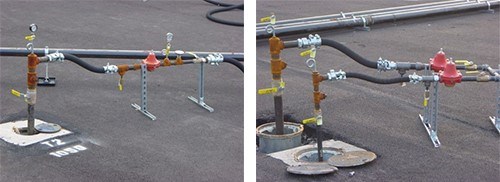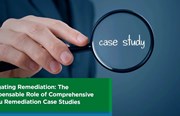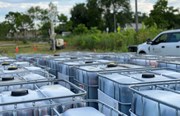- Cascade
The earliest form of in situ thermal remediation (ISTR) is steam enhanced extraction (SEE). The technology was developed in the late 1990s at the University of California, Berkeley by Kent Udell, Roger Aines, and Robin Newmark. The technology was subsequently commercialized by Steamtech with TerraTherm's former CTO Gorm Heron playing a major role in the early development and implementation.
As the ISTR industry has evolved, electrical resistance heating (ERH) and TCH have emerged as dominant technologies. They are not limited to porous soil types, can heat shallow treatment volumes, and often do not require hydraulic control systems. Recently our clients have wondered if SEE is dead. The answer to that quandary is that steam injection is playing an important role in the current ISTR marketplace and will continue to do so on many large and complex remediation projects.

With TerraTherm's acquisition of Current Environmental Solutions (CES) and Global Remediation Services (GRS), they now has decades of experience with all three primary thermal remediation technologies: TCH, ERH, SEE. We have team members who have been involved with all three types of heating since the technologies were born. Using these capabilities, we are increasingly combining ISTR technologies to bring innovative solutions to difficult remediation problems. This includes the use of SEE on approximately 10 to 20 percent of our ISTR system designs, as either a standalone thermal offering, or by combining steam with our other heating technologies.
SEE is the most cost-effective way to input energy into the subsurface. Steam systems are relatively simple and easy to install, and they cope very well with the cooling effect of flowing groundwater and combining them with TCH and/or ERH is a straightforward process.
A recently completed project in California best illustrates how SEE can be combined with an electrical heating method (TCH or ERH) to heat a treatment volume that is not ideal for the application of a standalone heating technology.

Heating throughout the 8,000 square foot treatment zone had to extend to 95-feet below grade. Site lithology consisted of lower permeability interbedded soil units mixed with high permeability sand units, underlain by a high flowing sandy aquifer. The interbedded units were too tight for the successful application of SEE, while groundwater flow in the sand units was up to 1,900 ft/year – way too high to for TCH or ERH to reach design temperatures. The solution was to heat the interbedded units with TCH and use SEE in the higher permeability high flowing sand units.
The target temperature of boiling groundwater was reached throughout the treatment volume and over 22,000 pounds of chlorinated hydrocarbons were removed in the vapor and liquid phases. This successful site remediation provides an illustration of how Cascade Thermal uses SEE as a valuable component of our suite of solutions. Steam is not dead, expect to see it coming to a contaminated site near you.
Categories
- Site Remediation
- Drilling
- Careers
- Cascade Chemistries
- Safety
- Site Characterization
- Thermal
- Rotary
- Sustainability
- In Situ Stabilizaton
- High Resolution Site Characterization
- Injection
- Sonic Drilling
- Automated injection
- corporate sustainability
- case studies
- in situ thermal remediation
- Cascade Drilling
- Over Water Drilling
- In Situ Stabilization (ISS)
- ISS
- Environmental Remediation

